This is an original 1988 Nissan Desert Runner pickup, just 1,000 of them were made as a celebration of Nissan’s victories in the Baja 1000, the Gold Coast 300, and the Mint 400.
Based on the Nissan D21 Hardbody, the Desert Runner was given a range of upgrades including a bed-mounted roll-cage with spotlights and a spare tire, a tailgate net, plenty of Nissan racing decals, driving lights, a front bash plate, 31″ tires, tubular bumpers, tubular side bars, a front bull bar, and perhaps most importantly, an ice-chest holder built right into the bed.
Fast Facts – The Nissan Desert Runner Pickup
- The 1988 Nissan Desert Runner was a special edition truck, with only 1,000 units produced to commemorate Nissan’s victories in three major off-road races – the Baja 1000, Gold Coast 300, and Mint 400. These vehicles were exclusively sold in the United States, and they’re slowly becoming collector’s items.
- Based on the Nissan D21 Hardbody, the Desert Runner came with significant upgrades including a bed-mounted four-point roll cage equipped with spotlights and a full-sized spare tire, a front bash plate, tubular bumpers and side bars, 31″ all-terrain tires, a tailgate net, driving lights, and an innovative built-in ice-chest holder in the bed. These enhancements were aimed at emphasizing its off-road capabilities and unique styling.
- Each Desert Runner was powered by a robust 3.0-liter V6 engine, delivering 145 bhp and 164 lb-ft of torque. It featured a 5-speed manual transmission, a dual-range transfer case for four-wheel drive, and a rear limited-slip differential, mirroring the configuration of Nissan’s race trucks and ensuring strong off-road performance.
- Despite not yet achieving widespread cult status, the Desert Runner is gaining traction among collectors, particularly those with a fondness for 1980s off-road vehicles. With its unique features, limited production, and association with notable racing victories, it holds potential for increased value and desirability as the Radwood generation’s interest in retro vehicles grows.
The Nissan Hardbody D21
The D21 Nissan Hardbody pickup truck was released in 1985 as the successor to the earlier Datsun 720 series of pickups. The model was unique in that it had two distinct body styles, the “A” body which was designed in Japan, and the more common “S” body King Cab which was designed at Nissan’s styling studio in California.
Above Video: This episode from Nissan’s series “Living to Thrill” features Daine, who bought an old Nissan Desert Runner Pickup and got it back on the road – including a full engine rebuild.
The two styles of the Hardbody were easy to distinguish, with the American-designed “S” body coming with a very different front end, with a new hood design and wider flared front fenders. In the US market, which was Nissan’s most important at the time the D21 came in either standard or king cab variants, with either standard or long beds, 6′ and 7′ respectively.
International markets saw a lot more options, with some markets like Australia, receiving both the American and the Japanese versions, which were sold side-by-side. These markets received single and double cab versions with varying bed lengths, a wide array of engine options, and by the 1990s production was taking place in the United States, Mexico, China, Thailand, and the Philippines.
Structurally, the Hardbody was fairly standard, with a steel ladder frame chassis, independent front suspension, a live axle in the rear on leaf springs, front discs and rear drums, and a steel body. The body featured a heavy duty double-walled bed, which is where the name “Hardbody” originally came from.
The Nissan Desert Runner Pickup
The Nissan Desert Runner debuted in the 1988 model year as a special edition D21 Hardbody developed to celebrate the three production class victories taken by the Japanese automaker at the Baja 1000, the Gold Coast 300, and the Mint 400 – three of the toughest off-road races in North America.
Just 1,000 examples would be made, and they would all be sold in the United States, with no other world markets getting any allocation. This seems a shame in a way, as in places like Australia, South Africa, New Zealand, and Canada, the Desert Runner would likely have proven quite popular.
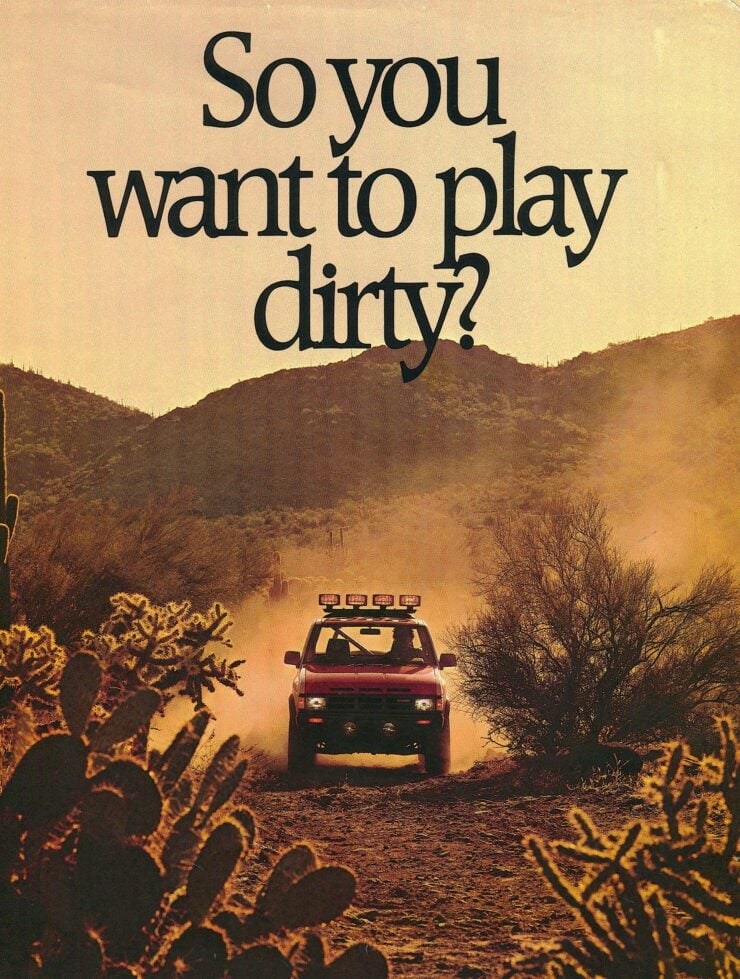

Each Desert Runner started with a standard Nissan Hardbody D21 with the standard cab and standard bed, this was the shortest and lightest weight version of the truck, and it was the one most commonly used in production-based off-road racing classes.
The 3.0 liter V6 version of the D21 was chosen, this was the largest engine that the factory fitted to the truck, and it was good for 145 bhp and 164 lb ft of torque. Power was sent back through a 5-speed manual transmission and a dual-range transfer case to either the rear wheels or all four wheels, and a rear limited-slip differential was fitted – just like on the race trucks.
Now, while some manufacturers might have been happy to simply slap a decal pack on the truck and call it a day, Nissan wanted to go a little further with the Desert Runner. They installed a heavy duty four-point roll cage in the bed topped with four spotlights. This roll cage also holds a full sized spare wheel, and there’s an ice-chest holder in the bed.
Alloy wheels were fitted on all four corners with 31″ all-terrain tires, the truck also had a tailgate net, a front skid plate, tubular bumpers front and rear, tubular rocker guards on either side with integrated steps, front driving lights, and some decals just for good measure.
Nissan had no problem selling all 1,000 examples, as could well be expected, and today the surviving examples are sought after by collectors. The Desert Runner has never reached cult collector status, perhaps a little puzzlingly, as they include all the right retro ingredients.
That said, with the Radwood generation now coming of age it may just be a matter of time before Desert Runner prices start reaching for the stratosphere.
The 1988 Nissan Desert Runner Pickup Shown Here
The truck you see here is a 1988 Nissan Desert Runner, it does have a couple of aftermarket modifications including non-original 15″ American Racing wheels and an updated Kenwood stereo system, but these could be left as-is, or replaced with original items if the new owner so wishes.


This vehicle was purchased from the estate of the original owner, so it remains a two-owner truck at the moment, and it’s now being sold with 215,000 miles on the odometer. It’s fitted with the standard 5-speed manual transmission, and all the original Desert Runner parts are present and accounted for.
If you’d like to read more about it or register to bid you can visit the listing here on Bring a Trailer. It’s being offered for sale out of Manville, New Jersey at no reserve with a clean Carfax report and a clean New Jersey title.









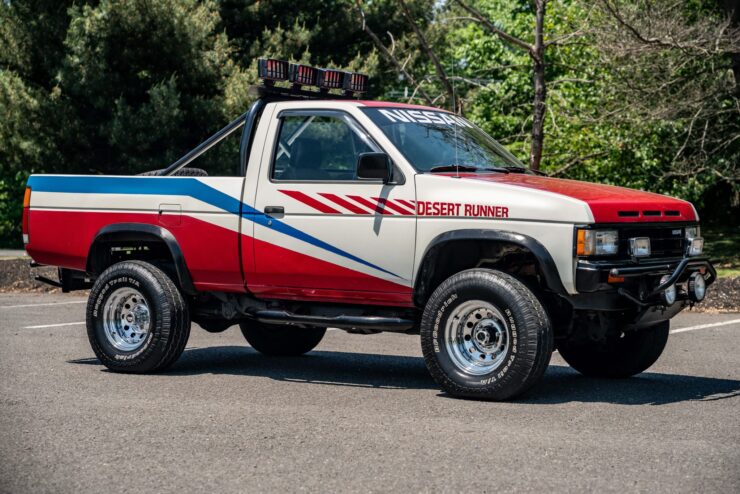




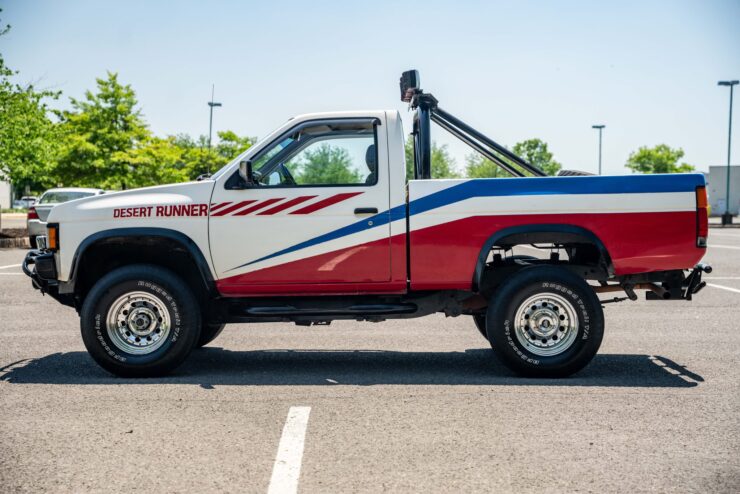
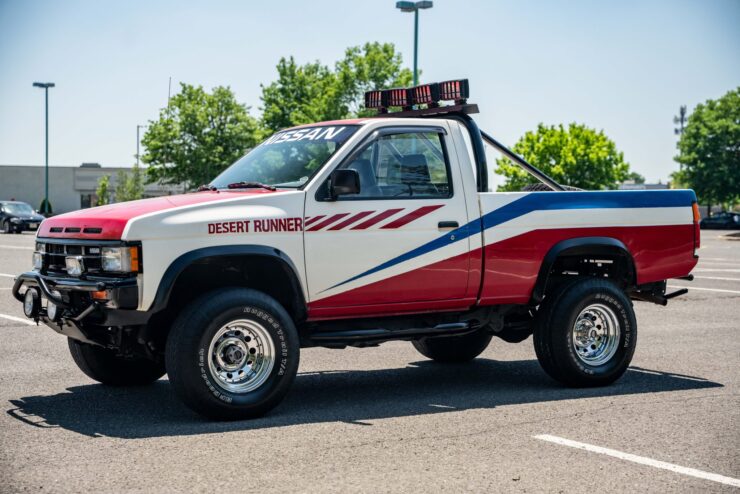
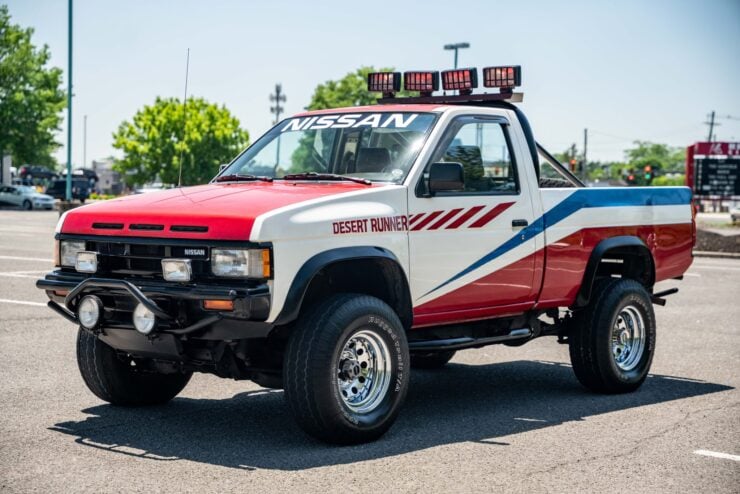




Images courtesy of Bring a Trailer








